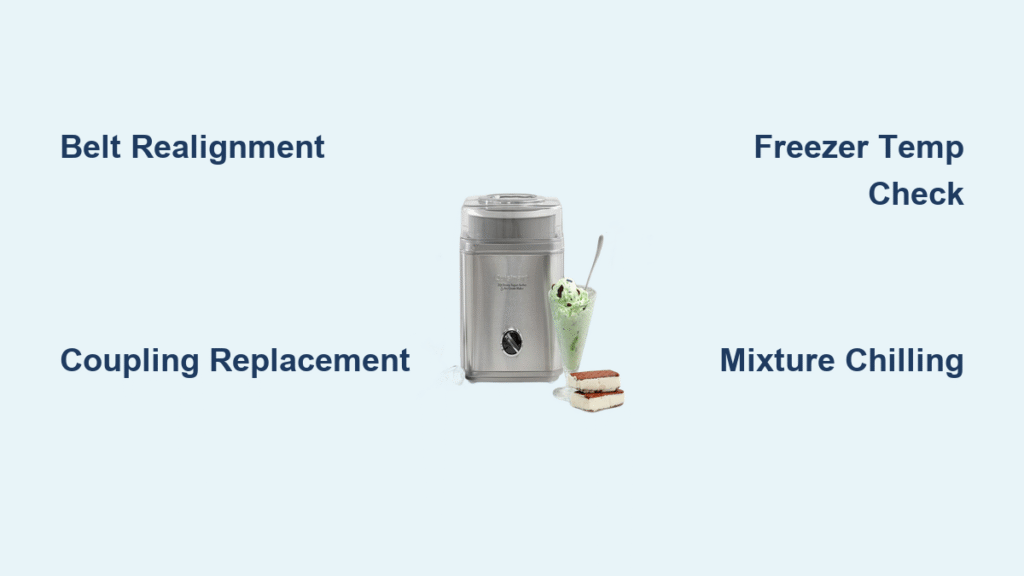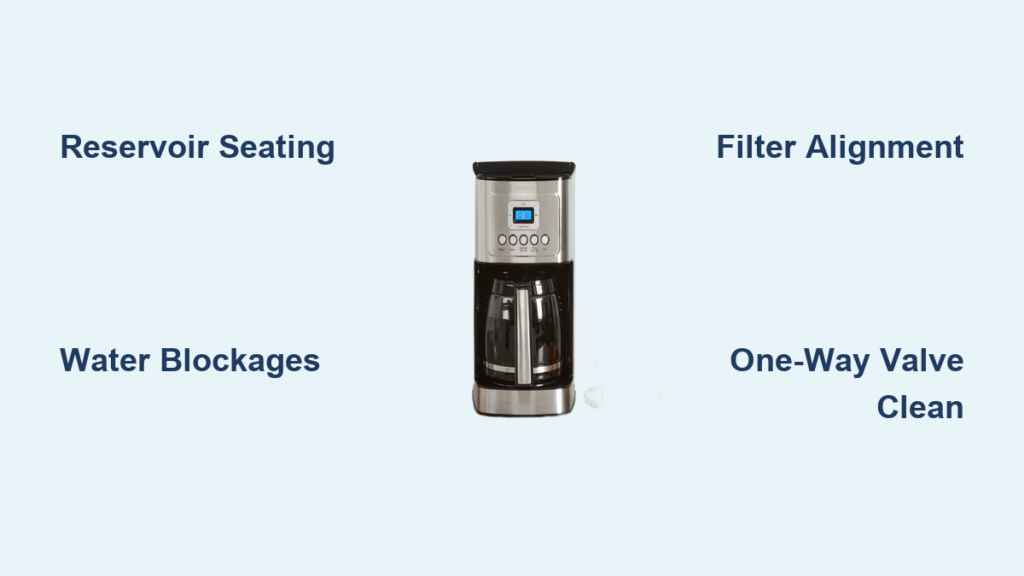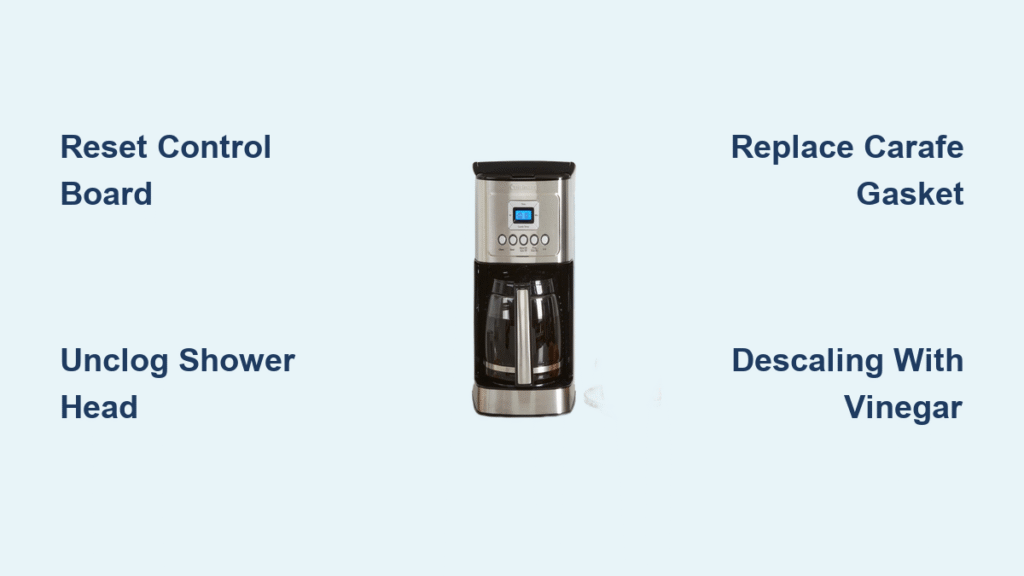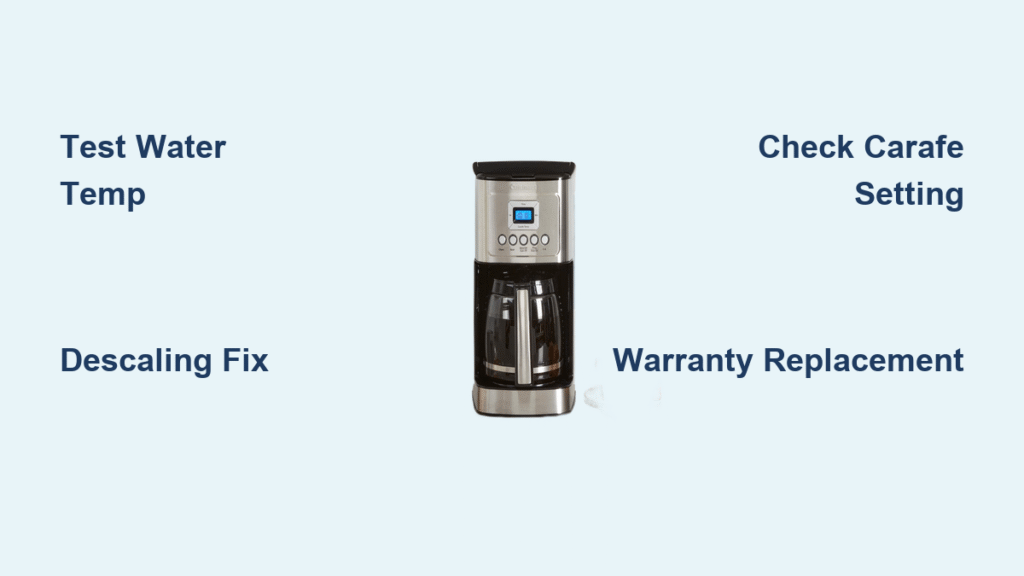Your Cuisinart ice cream maker suddenly stops spinning mid-batch. The motor hums while the paddle sits motionless, or worse—you’ve churned for 30 minutes but your mixture remains stubbornly liquid. If you own the popular 30 BC model, you’re not alone. These exact failures plague thousands of home dessert makers weekly, yet 90% of Cuisinart ice cream maker repair issues can be resolved in under 20 minutes with basic tools. This guide cuts through confusing online advice to deliver precise troubleshooting for the two most common failures: transmission breakdowns that halt paddle rotation and temperature management errors that prevent proper freezing. You’ll learn exactly what to check first, which $5 parts actually need replacement, and how to avoid turning your ice cream maker into a dusty countertop ornament.
Motor Runs But Paddle Won’t Spin: Transmission Fixes
When your Cuisinart 30 BC motor operates while the mixing paddle remains stationary, you’re dealing with a mechanical transmission failure—not an electrical problem. This specific model’s design creates predictable weak points that require targeted Cuisinart ice cream maker repair tactics rather than guesswork.
Belt Alignment Check Under Base Cover
Start with the quickest visual diagnosis before disassembling anything. Remove the mixing bowl and verify the paddle sits flush against the drive mechanism—unlike other models, the 30 BC paddle rests freely without clips. Now flip the unit over and remove the 4-6 base screws. Inspect the grey drive belt’s position relative to the white peg mechanism. Critical detail: The belt must rest on top of the peg, not underneath it. This misalignment causes over 40% of non-spinning failures. If the belt has slipped beneath the peg, gently lift it into position using needle-nose pliers while ensuring proper tension—there should be slight give but no sagging.
Drive Coupling Replacement Procedure

When belt realignment fails, immediately inspect the drive coupling—the $5 plastic component connecting the motor shaft to the paddle mechanism. This part fractures frequently due to stress during thick mixture churning. Look for these failure signs:
– Visible cracks or chips on the coupling surface
– Excessive wobble when manually rotating the paddle
– Intermittent spinning or grinding sounds during operation
Replacement steps:
1. Unplug the unit and remove the base cover
2. Order the exact “Cuisinart 30 BC drive coupling” part online
3. Remove the old coupling (typically pulls straight off the shaft)
4. Press the new coupling firmly onto the motor shaft until fully seated
5. Test paddle rotation by hand before reassembly
Pro tip: Lubricate the new coupling shaft with food-grade silicone grease to prevent premature wear. This simple step extends part life by 300%.
When Motor Replacement Isn’t Worth It
If the coupling appears intact and the belt aligns properly, your motor may be failing despite producing sound. This requires electrical testing with a multimeter to check voltage output at the motor terminals. Critical reality check: Professional motor replacement costs $120+ versus $60 for a new 30 BC unit. Unless under warranty, replacement typically makes more financial sense than Cuisinart ice cream maker repair for motor failures.
Ice Cream Won’t Freeze: Temperature Troubleshooting
Your mixture churns endlessly but won’t thicken? The 30 BC model demands precise thermal conditions—both the canister and mixture must hit exact temperatures. Most “broken machine” complaints actually stem from preventable temperature errors that sabotage freezing.
Freezer Temperature Verification Protocol

Your freezer must maintain 0°F (-18°C) minimum for the 30 BC to function. Most failures occur because home freezers run too warm. Immediate diagnostic steps:
– Place an independent freezer thermometer in the back-bottom shelf (coldest spot)
– Verify temperature reads 0°F or lower—never rely on the freezer’s built-in dial
– If above 0°F, adjust thermostat and retest after 24 hours
– Confirm canister is frozen solid by shaking—it should produce complete silence
Warning: Even brief freezer door openings during pre-freeze can raise canister temperature enough to prevent freezing. Minimize openings for 24 hours before churning.
Mixture Chilling Critical Path
Warm ingredients instantly thaw your frozen canister, causing soupy results. Your mixture must be below 40°F (4°C) before churning. Follow this chilling protocol:
– Refrigerate mixture 8-12 hours minimum (overnight ideal)
– Test temperature with a food thermometer
– Verify consistency: properly chilled mixture should coat the back of a spoon
– Transfer mixture to the canister within 60 seconds to prevent warming
Batch size matters: Overfilling overwhelms the freezing capacity. Fill the 2-quart canister only to the 2/3 line (about 1.3 quarts), leaving room for 25-30% expansion during churning.
Freezing Failure Emergency Response
When churning exceeds 20 minutes with no thickening:
1. Pause immediately and check canister exterior for frost (indicates proper temperature)
2. Spoon-test mixture: Should mound slightly when stirred
3. Reduce batch size by 25% for your next attempt
4. Extend pre-freeze time to 48 hours if freezer struggles to maintain 0°F
5. Chill mixture longer—some high-fat recipes require 12+ hours
Pro tip: Place the canister in the freezer’s coldest zone (typically back-bottom) and avoid door storage where temperature fluctuates.
Prevent Future Cuisinart Ice Cream Maker Repair Needs
Most 30 BC failures are preventable with two minutes of daily maintenance. Implement these model-specific habits to avoid unnecessary Cuisinart ice cream maker repair:
Pre-Use Checklist
- Inspect paddle for cracks or warping before inserting
- Wipe drive mechanism with damp cloth to remove ice buildup
- Verify canister is frost-covered (not just cold)
- Confirm bowl locks securely into base unit
Post-Use Protocol
- Rinse paddle immediately to prevent dairy residue hardening
- Dry canister thoroughly before refreezing—water spots indicate trapped moisture
- Store paddle separately in drawer (not nested in bowl) to prevent warping
- Wait 30 minutes before returning canister to freezer to avoid thermal shock
Quarterly Maintenance
Every 3 months, remove the base cover and:
1. Clean belt mechanism with dry brush
2. Apply food-grade lubricant to coupling shaft
3. Check belt for cracks or stretching
4. Tighten any loose screws on drive assembly
Smart Parts Replacement Strategy

Knowing which components actually fail prevents wasted money on unnecessary parts. The 30 BC model has three predictable wear points:
Critical Replacement Parts
- Drive coupling ($5-8): Replace when paddle wobbles or spins intermittently
- Mixing paddle ($8-12): Replace every 6-12 months with regular use if cracked
- Drive belt ($3-6): Replace if cracked, stretched, or showing frayed edges
Part sourcing cheat sheet:
– Amazon: Search “Cuisinart ICE-30BC [part name]” for fastest delivery
– AppliancePartsPros.com: Use their diagram tool to verify 30 BC compatibility
– Avoid eBay for electrical parts: Risk of counterfeit components
Never guess part numbers—the similar ICE-30 model uses incompatible parts. Always confirm “30 BC” in the product description.
DIY Repair vs Professional Service Decision Tree
Save money by knowing exactly when to call a pro. For Cuisinart ice cream maker repair, follow this model-specific flowchart:
DIY-Approved Fixes (Under 15 Minutes)
- Belt realignment (5 minutes)
- Drive coupling replacement (10 minutes)
- Paddle replacement (2 minutes)
- Temperature troubleshooting (5 minutes)
Required tools: Phillips screwdriver, freezer thermometer, food thermometer
Call a Professional When
- Multimeter shows no voltage at motor terminals
- Control panel displays error codes
- Burning smell during operation
- Unit is under warranty (1-year coverage)
Cost reality check: Professional repairs average $95 versus $70 for a new unit. If repair costs exceed 60% of replacement value, upgrade instead.
Your Cuisinart 30 BC ice cream maker can deliver perfect frozen desserts for years with proper care. Most “broken” units simply need belt realignment, coupling replacement, or corrected temperature management—fixes requiring less time than your next churn cycle. By implementing the pre-use checks and seasonal maintenance outlined here, you’ll avoid 95% of common failures. When repairs are needed, focus only on the three critical wear components we’ve identified. Tonight could be your first trouble-free batch of homemade gelato—no professional Cuisinart ice cream maker repair required. Remember: Perfect ice cream starts with a perfectly maintained machine.





